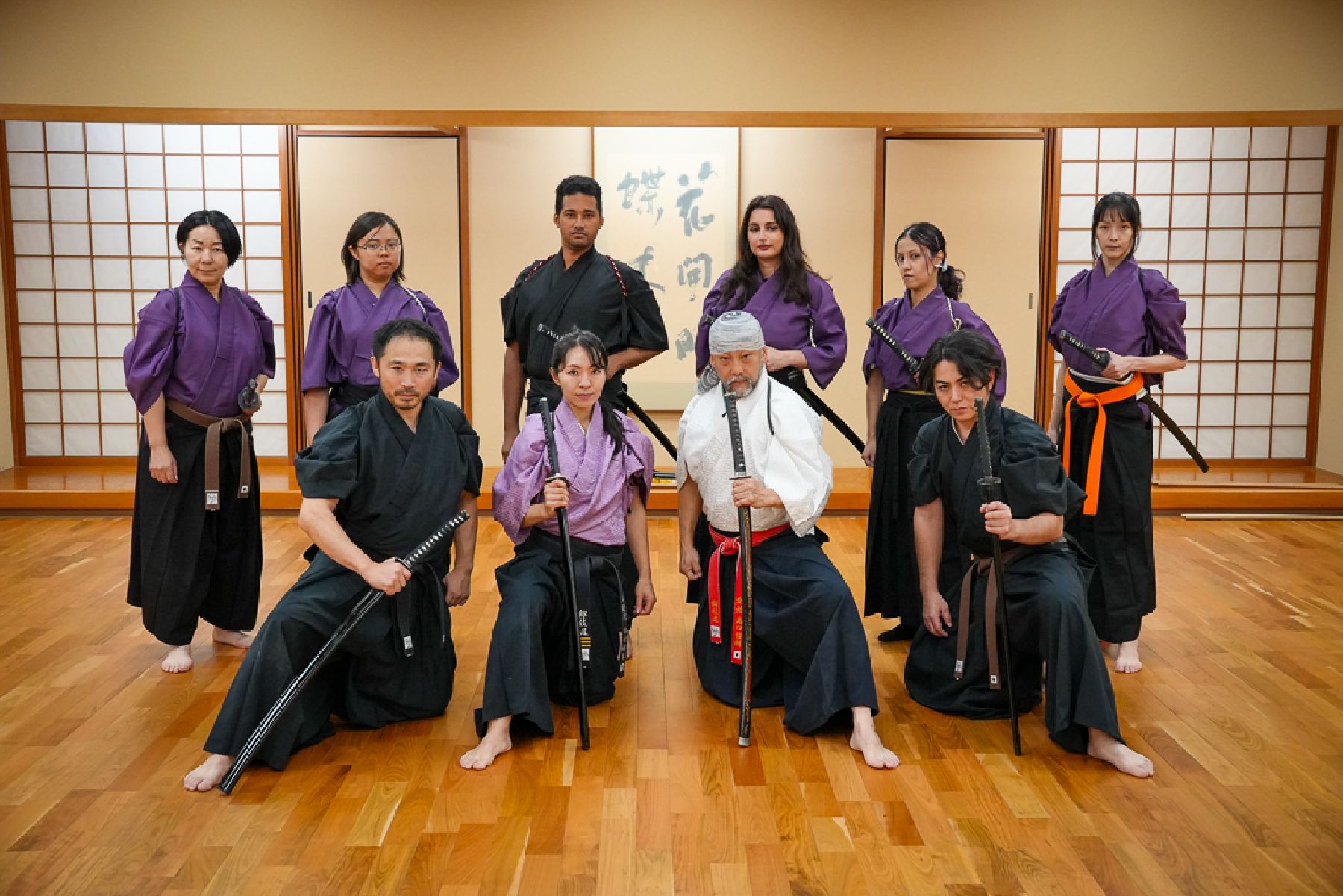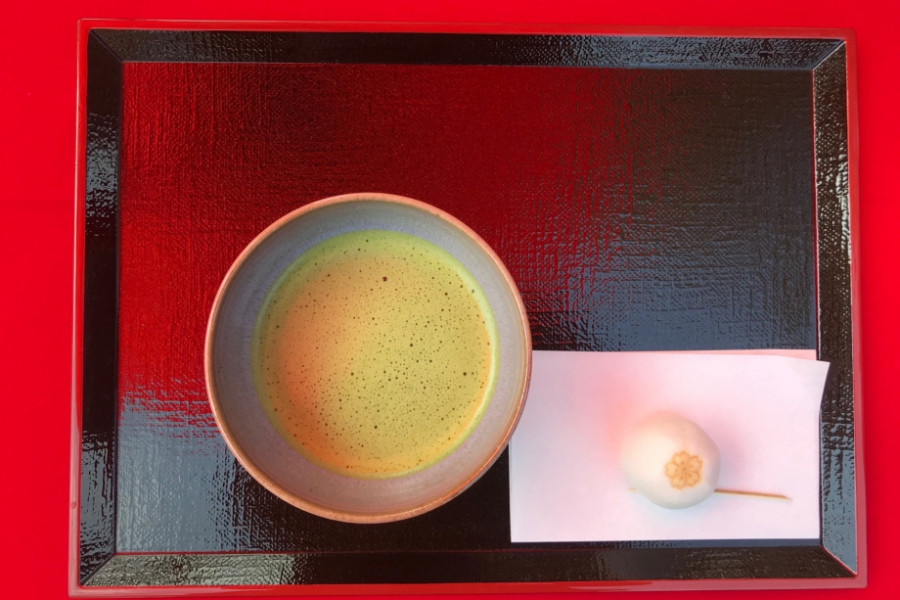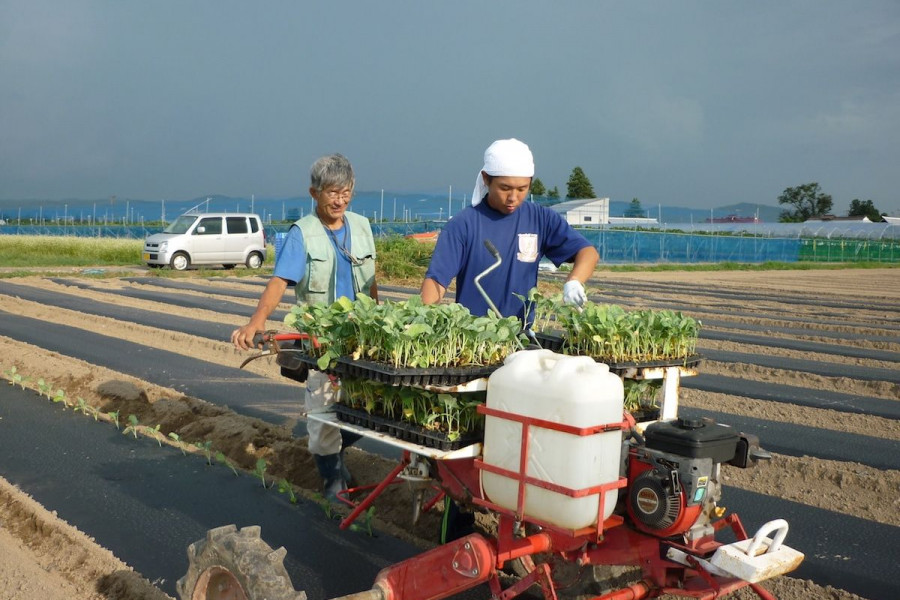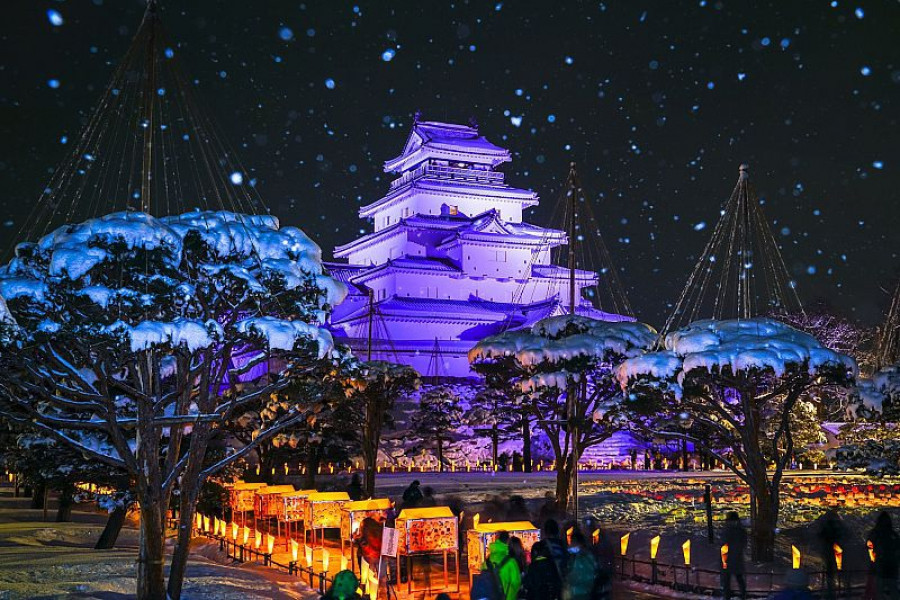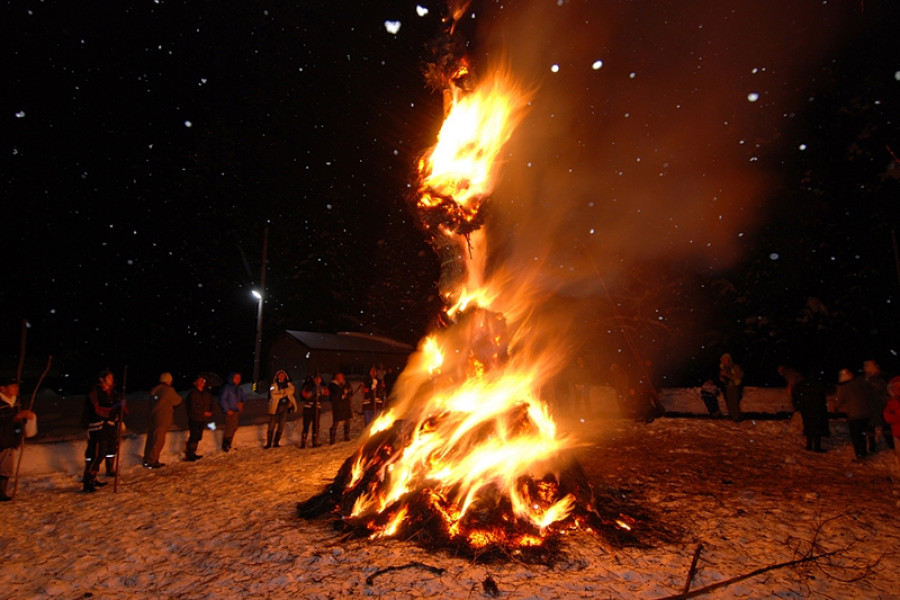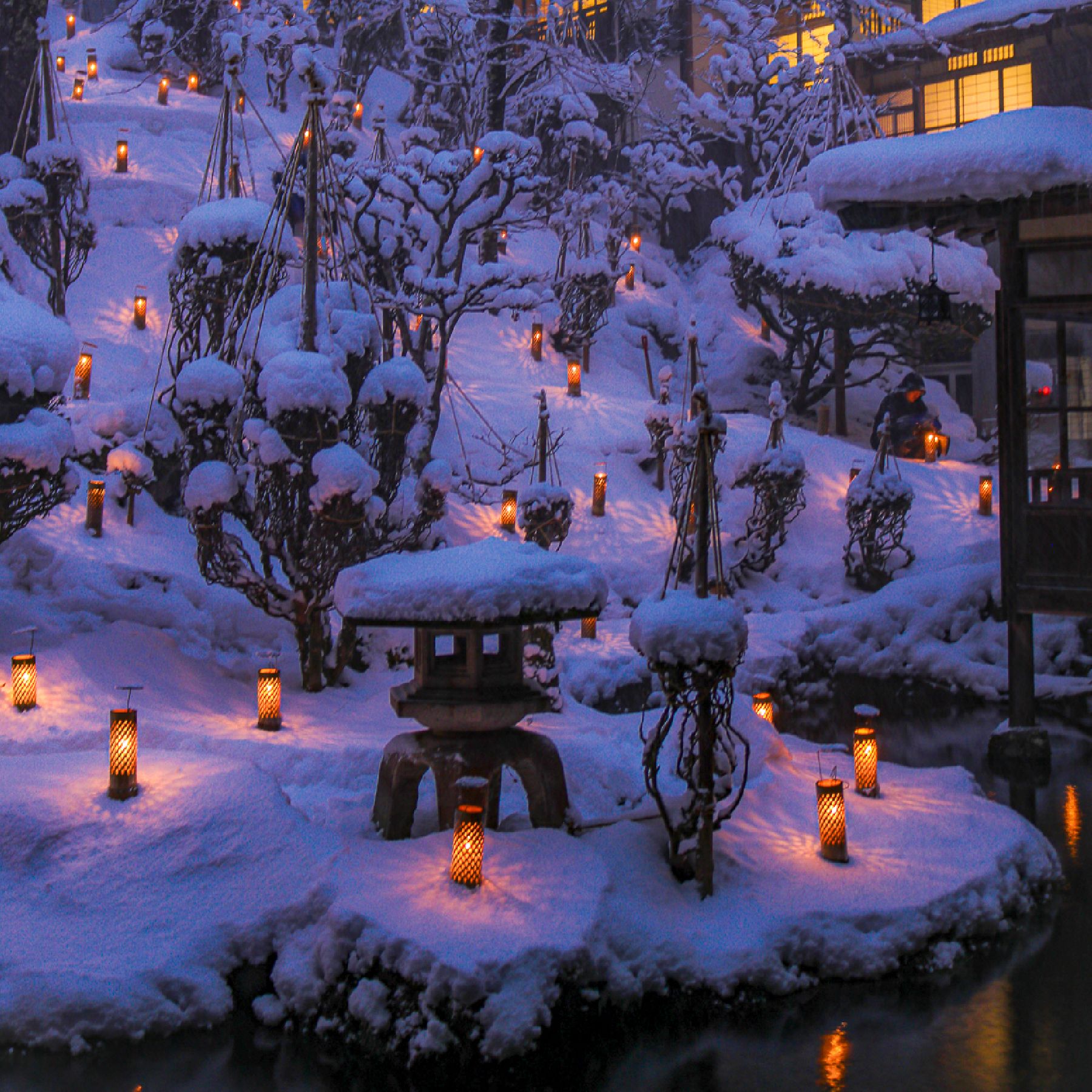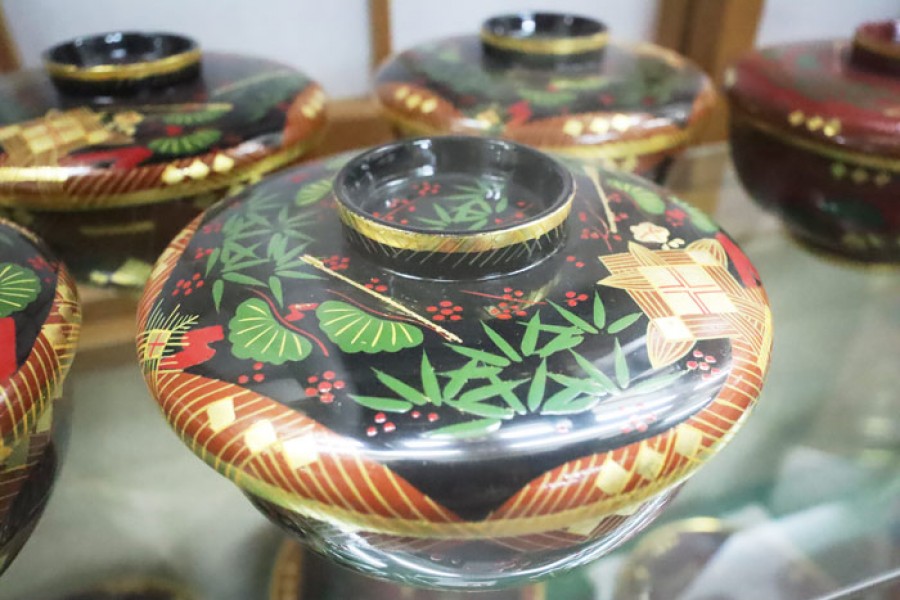
Makie Painting at Suzutake Workshop
Suzutake workshop tours began in the 1950s as a way of providing families with a chance to learn about the history and artistry of lacquerware. Even today, visitors are able to actually see artisans at work at three key stages of the Aizu lacquerware making process: 1) applying a base layer of unrefined lacquer or astringent liquid to wood; 2) adding additional layers of lacquer in a desired style, and 3) adding hand-drawn delicate designs ('makie') using either colored lacquer or gold and silver power (a technique called 'Sunken gold makie'). Visitors can also take part in a makie-painting experience.
